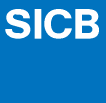 |
|
 |
Back to SICB '97 Fall Newsletter |
 |
SICB Officers |
Mortal Sins in Oral Presentations or How to Give a Talk if You Never Want to Talk Again
Thomas G. Wolcott
Audiences won't value information that didn't take some effort to acquire, so make them work to understand what you did and why it's important. Don't waste a lot of time outlining and organizing; assume that the audience will appreciate a talk that seems fresh and spontaneous, even if it wanders, includes irrelevant material, omits critical data or doesn't get around to the conclusions. Alternatively, write out the talk and read it verbatim. This suggests that it's an important address you prepared for some other occasion but graciously warmed over for this audience.
Don't let visual aids make the audience's job too easy. The points of your slides mustn't be too obvious. Use plenty of small, faint, preferably fuzzy text. If there's more text than you could type on a calling card, it's probably enough to be unreadable from the back of the room. Avoid any distracting distinction (fonts, colors) between headers and text, instead challenging the audience to sort out main ideas from supporting material. Try to use a different color scheme in each slide to make the audience think hard about the possible connections between them. An artistic advisor may be able to suggest combinations of text/background colors that will be invisible to color-blind viewers, or lurid enough to cause memorable physical sensations.
Talk to your slides. Turning your back on the audience and facing the screen demonstrates your devotion to science rather than to mere people, and shows that your information is so cutting-edge that even you don't really know it by heart yet.
Talk from your slides. This slide shows...This slide shows...Uh, what's the next slide?" proves that you're not allowing ideas to distract you from the data, and that your faith in those data is so complete that you need no other outline for your talk.
Assume that it's only the sheer volume of data that impresses audiences. Include at least one "I know you can't read this, but..." slide. This proves that you know far more than you have time to discuss. Feature plenty of tables in which only one or two cells are relevant. A superabundance of rows and columns will show how much work you did. A quick sequence of 8-10 ANOVA tables can be particularly effective, especially if you avoid allusions to the hypotheses they allow you to reject. Flip through lots of information-dense slides faster than they can be read and assimilated. This ensures respect by proving that you are more adept than your audience at dealing with information. Anything above one data slide/minute can convey this impression; but with more than two per minute you can leave the audience reeling.
Don't let ideas get the upper hand. Organize your talk around your data, not around the questions they address. Talk about "results of experiment one...experiment two...experiment three...etc." Try to avoid drawing conclusions, relating your work to any other piece of science, or speculating about why it's significant. You'll be invulnerable to criticism as long as you stay away from ideas and stick exclusively to data, because who can argue with facts? Emphasize the statistics rather than the conclusions. As long as p < 0.05 you're bulletproof, regardless of whether you can offer any biologically reasonable explanation of what's going on.
This is a "talk," so use language as your weapon. Talk just loudly enough to be at the limits of comprehension. You want the audience on the edges of their seats, so make them strain to hear. If you must have eye contact with anyone, make sure it's only with people in the first few rows; this will help you not to address the folks in the back. For a real crowd-pleaser, try starting each sentence loud, then taper off to inaudibility as you get to the meat of it. Mumble. Always move from idea to idea, section to section, by using universal transitions like "Uh" or "You know," "so" or "and". Audiences especially appreciate the coherence and structural clarity of talks consisting of one long sentence stitched together with conjunctions. This charming attribute is greatly attenuated by prior practice, which therefore must be eschewed.
Don't admit to any doubt about the clarity and persuasiveness of your talk by leaving time for questions. What purpose would interaction with the audience serve anyway? You're the expert on this subject!
Finally, never practice ahead of time in front of a critical but friendly audience. Your confidence and self-realization might be endangered if anyone is insensitive enough to suggest better ways to get your points across. Adherence to these guidelines will ensure that the audience members who remain through your whole talk are quiet and non-disruptive, and that there will be few challenges (or other forms of discussion about your work) during the coffee breaks.
The Society for Integrative and Comparative Biology
1313 Dolley Madison Blvd Suite 402
McLean VA 22101
Phone: 703-790-1745 or 800-955-1236
FAX: 703-790-2672
E-mail: SICB@BurkInc.com



